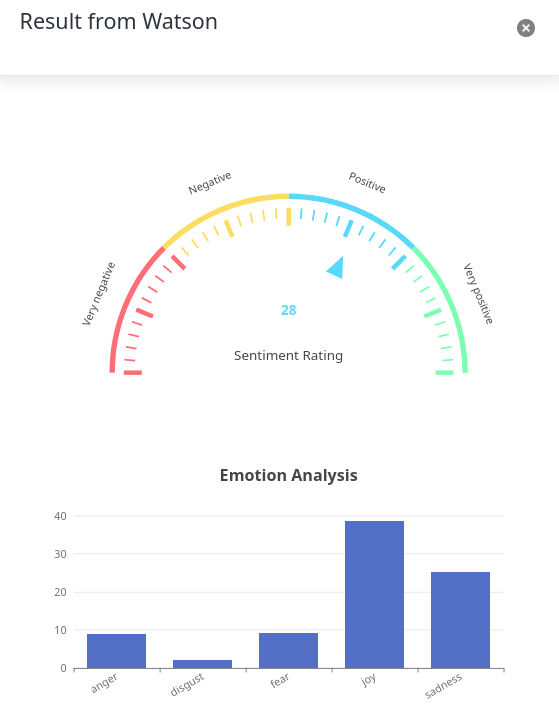
There is more than Generative AI
Everyone is talking about Large Language Models and generative AI these days, but there was AI before that, and the use of AI was widespread. I was using AI since at least 2020 to help me with this website, and not in a generative text way.
How did this start?
Some years ago, a friend of mine told me that my posts indicate a negativity. That was because of a LinkedIn post I had published these days, and of course I started reflecting. I had no idea how my posts or texts are perceived. But having one of the people I trust and whose opinion I value, telling me something like that, was a good indication that I need to do something about it. Incidentally, some time earlier, I was in my "try to learn about cloud offerings" phase, and one of the services I had noticed was IBM's Natural Language Understanding API.
Initial implementation
I quickly wrote a script and run through my texts on this blog, manually. Although it was not very clear, there were some texts that did indeed seem a bit negative. "A bit" meaning, I was reading them years after I had written them, and I could sense the negativity.
IBM's service can return a value, which can be interpreted in the range between "Totally Negative" and "Super Positive". As always with automated machine analysis, this should not be trusted blindly. But a little bit of liking getting this feedback, and a little bit of not having English as my first language, which comes with its own set of challenges, I decided to use this feedback in all texts I was writing for this blog post.
Subsequent changes
I do not remember when IBM's NLU service added emotion's analysis. It may have been there from the beginning and I just didn't care at the time. But after I developed the Sentiment analysis, I dug deeper and found the Emotions analysis to be fun and informative. So I added this. Some months ago I started a side project, Tango Events and Memories. In this project, I analyze data related to Tango events in Europe, and I experimented with presentation of this data graphically. Using the Apache Echarts library was interesting, and I am now quite comfortable in presenting data in charts. The initial numeric rating of the Sentiment Analysis became a Gauge chart. And I added the Emotions' analysis as a bar graph.
Take it out for a ride
One thing I would love to have, is the ability to analyze a mail message before I send it. Also, the ability to analyze a mail message when I receive it. I needed this functionality out of my blog engine and so I ended up writing a Firefox add-on which I would load locally on my personal computer. It is a pity I cannot use it - out of concern about privacy and because of playing by the rules with business information confidentiality - for my business email. A couple of people, I showed it to, considered it cool and asked access to it; so I decided to bundle the add-on and publishing it for Mozilla and Chrome (and Edge).
That's how it looks now (analyzing this particular text):

The add-on is not easy to use. I do not know a public NLU service from IBM; if one wants to use it, a (free) cloud account on IBM Cloud needs to be created, and a (still free) instance of the NLU service needs to be spin up. But this is not something I need to worry about. If someone wants to use it, they can find the way to do so. I probably should spin up a 'startup' and sell this as a service - I have seen simpler things being offered for money, to be honest....
Final thoughts
I should have done that a couple of years ago. I am surprised, and disappointed, that such a plugin doesn't exist from Microsoft (for Outlook). That would do miracles not only for my emails, but for all people's emails. Such a plugin has the potential to reduce the toxicity and negativity we see in internal communications in companies. Oh well, maybe now that the add-on is public, someone will think to create it and bundle it with Microsoft's email solutions.